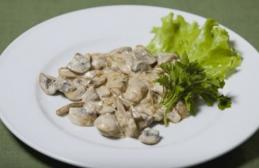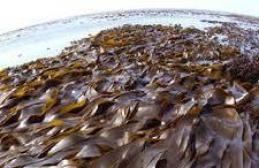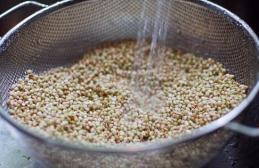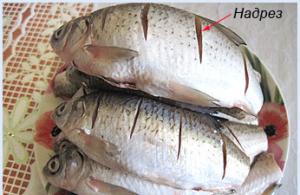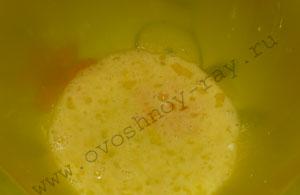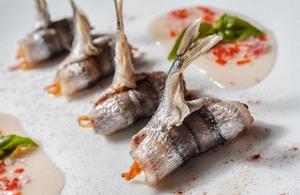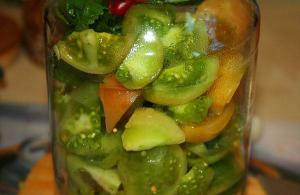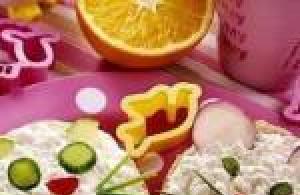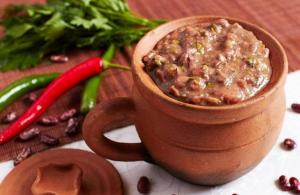For thousands of years, man has interfered with the natural processes of living nature: he changed the structure of soils, introduced various organic and mineral additives, destroyed insects and birds, changed the productive qualities of plants and animals, used chemically active drugs, genetic modernization, changed the natural diets of animals, and used pharmacological drugs, etc.
Results of negative impact on product quality.
All these impacts could not but affect the quality of food products. An additional factor is the deterioration of environmental conditions: pollution of soil, air, and water. Another significant reason can be called economic feasibility: to reduce the cost of products and increase competitiveness, measures are taken that significantly worsen the quality.
What effect do non-organic products have on the human body? Negative impacts of various natures. Intoxication, metabolic disorders, hypovitaminosis, allergic reactions, increased fatigue, sleep disturbances, various disorders of the nervous, circulatory, excretory, digestive, reproductive and endocrine systems, decreased immunity, increased susceptibility to cancer and much more.

The relevance of organic food.
For these reasons, it is very important to ensure that the products are environmentally friendly. Eating organic products helps the human body gradually recover from the negative effects of low-quality products. Healthy nutrition is the basis of normal human life and makes it possible to increase life expectancy. Every year the relevance of environmentally friendly products becomes greater. People prefer to eat high-quality and healthy food, but this requires careful control at all stages of obtaining food products and entails considerable financial costs. 
What are the requirements for environmentally friendly products?
1) Growing conditions.
In the process of growing crops, the use of mineral fertilizers, pesticides, herbicides or other harmful chemicals, as well as any unnatural irradiation, is prohibited (or strictly limited). In addition, it is necessary to prevent the ingress of foreign substances into the product during processing.
To obtain environmentally friendly livestock products, you need to use only environmentally friendly feed when raising animals. Feed antibiotics and hormonal drugs should not be used. 
2) Product composition.
When manufacturing the product, it is prohibited to use genetically modified organisms, artificial preservatives, synthetic flavors, enhancers and taste substitutes. The use of chemical additives and harsh processing technologies to preserve and change the properties of the product is not permitted. 
3) External processing.
An environmentally friendly product should not be exposed to chemical factors, wax, etc. 
The environmentally friendly product has a natural taste, aroma, high content of vitamins and minerals, and is safe for children and pregnant women.
Right to name
With full confidence, only those products that have a certificate from one of the generally accepted certification organizations in the world can be called ecological or organic.
Russian certification you can trust - the “Leaf of Life” badge of the St. Petersburg Eco-Union. Of the foreign ones generally accepted on the Russian market, the most widely used are the EU Eurolist, the American USDA Organic, the Italian ICEA, and private foreign certificates of the Demetra and Bioland systems.



If we talk about the differences between our and non-our certificates, the Russian national standard for organic products is adapted from generally accepted international standards and has minor differences. True, it came into force quite recently, only this year.
Certificate – quality guarantee
The certificate mark on the product means that it was produced without pesticides, synthetic fertilizers, antibiotics, anabolic drugs, steroids, or GMOs. To obtain such a certificate, the product, at every stage of its production - from seed to the counter, is very strictly checked by inspectors of certifying companies. Everything is very strict and everything can be verified: each batch of products has its own number, which can be used to check the authenticity of the product by going to the website of the certification company. The certificate must be confirmed every year and only for a certain volume of products. It will not be possible to sell products from a neighboring uncertified field under the guise of organic; the inspector will quickly discover this. They check everything - land, seeds, fertilizers, plant protection products, feed, living conditions for animals, slaughter method, processing, transportation, storage.
“Eco” and “organic” do not count
Products that do not have a certificate, but simply the words “eco”, “bio” or “organic” on the packaging are just a statement from the manufacturer, which may or may not be true. Unfortunately, Russia has not yet adopted a federal law on organic products, which would prohibit simply putting such labels on packaging, which is what many unscrupulous manufacturers take advantage of. Despite the fact that in Russia there are catastrophically few certified producers of organic products, no more than 70 throughout the country. While, for example, in Turkey there are more than 40 thousand, in India there are 500 thousand.
If there is no certificate
What should we focus on if most domestic products do not have any certificates, but do we need something?
Products that need to be treated with special care are pork, chicken, eggs, milk and dairy products, sweets, out-of-season fruits and vegetables, and commercially grown fish. It is worth giving up processed foods and fast food. It is better to prefer natural products with a short shelf life to any processed products. It is extremely difficult to determine the environmental friendliness of products by appearance, color, and smell, since there are such “craftsmen” who give ordinary products natural properties that even experienced experts will not find the difference.
The most obvious differences in taste, smell and appearance are natural apples, tomatoes, cucumbers, meat, ukop, honey, cottage cheese, and cheese. Most products are difficult to distinguish immediately.
You definitely shouldn’t choose fruits and vegetables that are glossy and beautiful, identical in size and shape, or very large; as a rule, these are GMO products grown with a large amount of agro-toxic chemicals. Cow's and goat's milk should not have a strong or unpleasant smell. If this is so, then the animals were kept in dirt and poorly cared for. Ask meat and milk sellers what they feed their animals. If the answer is: store-bought “compound feeds,” then it is better not to take such milk and meat, since most commercial feeds already contain GMOs, antibiotics and growth hormones.
Closer to nature
The quality is closer to ecological for those who prepare their own feed and do without imported premixes. Completely natural and healthy milk comes from free-grazing animals that eat natural grass feed, as is customary in organic farming. It is better to buy meat and milk from small farms with up to 8 animals. The less crowded the animals are, the less they get sick, the less the risk of containing antibiotics in products. Well, the natural smell of fresh vegetables and fruits, not grown industrially, speaks for itself; it is impossible to fake it.
According to WHO, a person eats from 3 to 9 kg of preservatives, stabilizers and other food additives per year. Organic products don't have all this.
Natural products are more filling, they are better absorbed by the body, and contain more vitamins, minerals, and micronutrients. With a properly balanced diet of natural products, it is easier to maintain an optimal weight for the body, while semi-finished and industrial food, in addition to the fact that it has lost some of the beneficial substances from processing and freezing, it also contains cheap components that are difficult for the body to digest.
From my garden
Today, the safest way of high-quality ecological nutrition is either certified organic (Eco, bio) products or products grown in your own garden beds. Products from your garden/garden or from the forest can be considered environmentally friendly if you did not use GMOs, agrochemicals, antibiotics, growth hormones, or food additives during the growing or production process. And also if your site is far from industrial production and highways, and the soil and water for irrigation do not contain heavy metals and harmful chemical compounds.
Today, environmentally friendly products have become the most dynamic segment of the food market all over the world. According to experts, this segment is growing by 20% annually. What makes it so popular?
We, residents of megacities, forced to live in an aggressive environment, really want to do everything possible to improve and maintain our health. In order to drink clean water, we buy filters or already purified bottled water. To improve the air quality in our apartments and offices, we purchase ionizers, humidifiers, etc. But what to do with food? It turns out that the West has already answered this question. More than 30 years ago, eco-labels were created in Germany. It was called "Blue Angel".
The Blue Angel is the world's first and oldest environmental label for goods and services
The Blue Angel is the world's first and oldest environmental label for goods and services. It was created in 1977 on the initiative of the German Federal Ministry of the Interior, after which it was approved by the Ministry of the Environment at national and federal levels. The mark was seen as an environmental policy instrument designed to promote the harmonious development of the market and create a positive image of products that have confirmed their compliance with the environmental criteria of the Blue Angel program. In essence, eco-labels highlighted environmentally friendly products on store shelves. With its help, the buyer could easily distinguish eco-products from others. In addition to the high quality of the product itself, the presence of eco-labeling also means that during the production of a particular product, its manufacturers tried to do everything possible to ensure that as little harmful substances as possible enter the atmosphere. And this is no less important than the composition and quality of the product itself.
But how do you find out about this? How to understand which production is cleaner and safer for the environment? For this purpose, they created such a simple and convenient sign as an environmental label. Its popularity is constantly growing. Thus, the “Blue Angel” in the first year of its existence was awarded to 6 types of products; after 30 years, their number exceeds 4 thousand, despite the fact that quite high requirements have been established, taking into account all stages of the production process, from assessing the rational use of resources to sale of finished products. In European countries, the absence of eco-labels on products leads to a reduction in prices by 20-30%. Manufacturers have to accept the fact that one sign sometimes speaks volumes than a thousand words. Many countries have benefited from Germany's successful experience. Just a year after the Blue Angel appeared, they created their own environmental labeling programs. Today there are more than 100 such signs in the world. Among them is the eco-label “White Swan” (Scandinavian countries), known today in Russia.

Among the eco-signs “White Swan” (Scandinavian countries) today is one of the most famous in Russia
There is such a sign in Russia (a system of voluntary certification of products, works and services according to their life cycle “Leaf of Life”). All international eco-labeling programs are based on a product life cycle analysis procedure. This means that not only the product itself is assessed, but also the raw materials from which it was obtained, its packaging, the methods of its delivery to the store and the features of disposal are considered. Only a comprehensive analysis of a product, from raw materials to packaging, can provide a complete picture of its impact on humans and the environment. The basic principles of voluntary environmental certification under this scheme are laid down in the international standards of the ISO 14020 and ISO 14040 series. In Russia, the market for eco-products is extremely small, despite the fact that the interest in such products is enormous. In 2005
The St. Petersburg Ecological Union, which is the developer of the “Leaf of Life” eco-label, has opened environmental departments in stores across the city. Nowadays, such a service as environmental certification is practically unclaimed among Russian manufacturers. Our legislation prohibits the labeling of “eco”, “bio”, “environmentally safe”, etc. on packaging without documentary evidence of this fact. But today there is no way to check the manufacturer himself, that is, his product, for environmental friendliness, since the law does not stipulate what environmentally friendly products must comply with. In Russia, there are no uniform criteria for the entire territory that distinguish ecological products from conventional products.
In this regard, a lot of self-declarations and a huge number of products have appeared on the market, the packaging of which is marked: “bio”, “eco”, “organic”, etc. But this information has no confirmation and, unfortunately, in most cases misleads the consumer. Which, of course, affected the buyer’s confidence in eco-products in general. In addition, the Russian manufacturer is not entirely clear what environmental labeling can give it. It was assumed that the creation of specialized departments would contribute to the development of environmentally friendly products in Russia. But that did not happen. The main assortment presented on eco-shelves consists of Western goods.
Indeed, eco-products have long been in demand and popular in Europe. A Western manufacturer does not question why it needs to undergo an environmental assessment and receive an eco-label. After all, these are additional chances to be recognized internationally, which undoubtedly creates a more favorable image of the enterprise and increases its competitiveness. In addition, the presence of an environmental certificate greatly facilitates Western companies’ interaction with market partners, consumers, government and public regulatory authorities.
Well, the main thing, of course, is that such products are in great demand abroad! So it turns out that on Russian shelves we mainly find Scandinavian, German and other European eco-labels. But the “Leaf of Life” eco-label is quite difficult to come across here. Russian manufacturers are so far ignoring this approach to promoting their products. But in vain! Since 2007, the “Leaf of Life” eco-label has joined the world network GEN - The Global Ecolabelling Network, which unites more than 30 countries, including all countries of the European Union. “Leaf of Life” is recognized by the international community as complying with the principles of the ISO 14024 standard and the world practice of voluntary environmental certification. The inclusion of domestic producers, their goods and services in the system of international environmental certification, standardization and examination will allow them to compete on equal terms in the international market of goods and services.

The voluntary environmental certification system “Leaf of Life” was developed by the St. Petersburg Ecological Union (SPbES) in 2001, as part of the “Ecology and People” program. Today SPbES is the first in Russia and so far the only organization to receive an international
recognition of the procedure for determining the environmental safety of products and having the right to issue an environmental certificate at an international level. The system is registered with the Federal Agency for Technical Regulation and Metrology (certificate RO СС RU. И457.04ЧГ00).
After two years of the existence of environmental departments in St. Petersburg, the Ecological Union was forced to suspend their work due to the need to modify the very form of the project, adapting it to Russian reality, since the Western model does not work for us. Why did this happen? After all, the Russian buyer says that he needs such products and is ready to buy them.
There are several reasons, in my opinion. Firstly, it is quite expensive to eat only organic products, given their cost. In the West, the cost of eco-products is 1.5-2 times higher, but in our country it is 6-8 times higher than conventional analogues. Such a strong increase in price occurs due to transportation and customs costs. That is, if Russian eco-products appeared on our market, their affordable price could be a real impetus for the development of this area in Russia.
An important reason is our poor awareness of what environmentally friendly products are, what they look like and where they can be purchased. At the moment, “eco-products” is an abstract concept, understood by each buyer in their own way. Until this topic is supported by the government or a group of environmentally responsible producers, buyers will not have a clear picture in their heads. But there are also positive experiences. In 2005, the eco-supermarket “Grunwald” opened in Moscow. It presents products from more than 40 leading European manufacturers of eco- and bioproducts from Germany, France, Switzerland, Belgium and other countries. The store has a biocafeteria where baked goods are baked, salads and semi-finished products are prepared.
In conclusion, I would like to note that the purchasing power of the population is growing. And along with it, the fashion for a healthy lifestyle is growing, an integral part of which is proper nutrition. Choosing the right positioning of eco-products and actively promoting them at points of sale will allow this category to take a strong position in the market. Most experts believe that this area has great prospects in Russia. It can give a significant impetus to the development of not only agriculture, but also many other domestic producers.
Ministry of Science and Education of Ukraine
Donetsk National University of Economics and Trade named after. M. Tugan-Baranovsky
on the topic of: "Environmentally friendly products"
Donetsk 2009
In our modern times, when the air, water and land are polluted by human life products and the environmental situation, despite all the efforts of mankind, continues to deteriorate, people are beginning to think more and more about their health.
There is one Chinese proverb - “tell me what you eat, and I will tell you who you are.” This proverb most accurately characterizes the connection between the food you eat and how you look and feel.
On the food market today there are a lot of offers on the topic of “healthy eating”. Starting from all kinds of pills, powders (dietary supplements) and ending with products with an optimally selected diet. But no one can answer the question of which of them are really useful and most effective, for one simple reason: there are so many people on the planet earth and there are so many options for the impact of these products on them.
So is there only one solution to the problem of healthy eating?
Yes, it exists, and like everything ingenious, it is simple. To achieve this, food must be grown in an environmentally friendly environment and packaged in an environmentally friendly manner.
Why is this particular option the only one?
The answer to this question is simple. The products are created by nature without human intervention in the process; they contain all the necessary substances for the life of the human body in the most complete and balanced manner. In this case, the phrase “made by nature” can be applied. And this phrase will most fully and succinctly contain the answer to your question.
What is an environmentally friendly environment?
Where and how are environmentally friendly standards and criteria set?
The European certification system can give us the answer to this question.
In 1980, the International Federation of Organic Agricultural Movements (IFOAM) established the Basic Standards for Organic Production (IBS).
Here are some of them:
· cultivation of land must be carried out without the use of chemical fertilizers for at least three years;
· seeds for organic farming must be adapted to local conditions, resistant to pests and weeds and, most importantly, not be genetically modified.
· soil fertility must be maintained through a varied crop rotation and biodegradable fertilizers of exclusively microbiological, plant or animal origin.
· the use of herbicides, pesticides, insecticides, nitrogen-containing and other chemical fertilizers is prohibited.
· to combat pests, physical barriers, noise, ultrasound, light, traps, special temperature conditions, etc. must be used;
· when raising livestock to produce Organic meat, it is prohibited to use antibiotics and growth hormones;
· farmers must register any treatment of animals. Treatment records are reviewed annually by certifying authorities;
· the use of radiation and genetic engineering in the production of Organic products is strictly prohibited;
· if a product is labeled as Organic, its manufacturer is required to use 100% organic ingredients;
“So this is in Europe, but here nature is much cleaner and apples from our “favorite garden” are much tastier and healthier,” you might say.
Yes, everything is correct, and it’s tastier and healthier, but who checked it, where is the confidence in this? Where is the guarantee and criteria for what is more useful?
Unfortunately, no one can give you guarantees. There are no criteria yet either.
There are many voluntary certification systems that, for a “modest fee,” will turn your ordinary products into “environmentally friendly” products. At the same time, these voluntary organizations have their own criteria for evaluating products. Whether their criteria are correct or not is currently impossible to figure out, since there is no law that sets standards for Organic products.
As a result, we have many Russian food products that use the terms of European standards to increase sales of their products. Who among us has not seen juices, kefir, mayonnaise on store shelves, and this list can be continued for a long time, with the designations “BIO”, “BIO”, “Environmentally safe product”, “Checked by environmental expertise”, etc. In essence, it turns out that our consumer is being misled, simply put, “our brother is being fooled, gentlemen marketers.”
At the same time, in many European countries, at the state level, Organic product standards have been introduced. A system has been created to monitor the implementation and compliance of these standards.
How can our customers figure out which products on store shelves are truly Organic?
The easiest and fastest way is to find one of the symbols of European certification bodies on the product label. Here are examples of some of them:
| Organic Agriculture – EC Management System | European Union | In March 2000, the European Commission for Organic Products introduced this emblem. It is used exclusively voluntarily by those manufacturers whose products comply with the European Union standards system adopted in 1991. |
 Bio-Siegel (Ecological Seal) Bio-Siegel (Ecological Seal) |
Germany | In 2001, the German Federal Ministry of Consumer Protection, Food and Agriculture introduced a national label - Bio-Siegel (Ecological Seal), which identifies products from companies that adhere to the requirements of the EU regulation. |
| Agriculture Biologique (Ecological products) | France | France was one of the first European countries to introduce a national label for organic food, which replaced private labeling systems and is the property of the French Ministry of Agriculture. The application of this logo on goods is permitted after signing an agreement with the owner of the mark and fulfilling all the requirements established by EU legislation. The mark may also be applied to organic products from other countries, provided that the requirements of French legislation for farms using organic methods are met. However, products of plant origin must be produced in the European Union, with the exception of exotic ones. |
| Valvottua tuotantoa/Kontrollerad ekoproduktion (Certified organic products) | Finland | This national mark is issued by the Finnish Plant Inspection Center |
| Sweden | In Sweden, the only accredited inspection organization is KRAV. Its standard is more stringent than the requirements provided for by European legislation. Issued by the Swedish Society for Agricultural Products Control. The mark is also found on products produced outside Sweden (coffee, tea, fruit). | |
| Netherlands | This mark is issued by the State Inspection Body of the Netherlands, called Skal. | |
 United States Department of Agriculture United States Department of Agriculture |
USA | This label has been issued by the United States Department of Agriculture (USDA) since 2002 under the National Organic Program (NOP). |
| Finland | This ladybug mark is issued by a private Finnish certification body, Luomuliito. Most often this sign is found on vegetables. | |
 |
Europe, America, Africa, New Zealand | The Demeter organic certification standard, which emerged in 1924 based on the work of Rudolf Steiner (“Spiritual and Scientific Foundations for Successful Development of Agriculture”), became the first global standard for organic agriculture. The presence of the Demeter biodynamic production mark on the product packaging not only characterizes the special conditions of strict control at all stages of product creation according to Organic standards, but also reflects a special concept of an approach to careful and careful farming, taking into account many natural features (moon phases, seasons, etc. .), incl. caring for the cleanliness and safety of soils and the environment. Currently, Demeter International has 18 member organizations in Europe, America, Africa and New Zealand. |
What about our environmentally friendly packaging?
This issue is no less serious, but easier to resolve.
Why serious?
Yes, because no matter what environmentally friendly products are produced, if the packaging is toxic, it will ruin for us the quality of the product that we so strived for.
Why is it easy to solve?
What is environmentally friendly packaging is packaging that comes into minimal contact with the products it contains, without changing the quality properties of the products. Today, the packaging market can offer many options for environmentally friendly product packaging. At the same time, manufacturing and packaging technologies are constantly being improved.
People who grew up in the generation of the 90s of the last century, and even the early 2000s of this century, probably remember their childhood - a time that many now call happy. Communication on the Internet and mobile phones replaced letters sent by mail, computers replaced books and yard games, berries were eaten straight from the garden, and fruits from the tree, without worrying about washing them first. However, unwashed berries, as it turned out later, are not the worst thing that a child (and an adult too!) can eat today, because then food products were not “stuffed” with continuous chemicals, and berries and fruits ripened on their own , and not under the influence of nitrates and pesticides.
Did you know that the average life expectancy of a person in Russia has increased by 3 and a half years over the past 30 years? Of course, this was largely due to advances in medicine, but people themselves began to take more care of their health, preferring to lead an active, healthy lifestyle and eat organic foods. It is on the topic of natural nutrition that there has been real “hysteria” lately: buyers prefer to visit an organic food store and overpay 1-2 tens of rubles for quality, rather than purchase dubious products on the market and people of unknown nationality.
Brief business analysis:
Costs of setting up a business:800,000-1,500,000 rubles
Relevant for cities with the population: from 50 000
Industry situation:supply market is unsaturated
Difficulty of organizing a business: 3/5
Payback: from 1 to 2 years
What are environmentally friendly products
And since the topic is in demand, I couldn’t ignore it and not tell my readers about this profitable business idea. But first, let's try to determine the criteria by which a product can be classified as environmentally friendly. To begin with, it must be said that almost all of these products are plant or animal semi-finished products grown in natural conditions - in beds or in farm barns. However, they can also be manufactured using special technologies.
- Firstly, such products must not contain GMOs– genetically modified organisms.
- Secondly, when growing them no artificial fertilizers, nitrates, growth accelerators were used, and other chemical “filling”.
- Such products do not contain food colorings, various flavoring additives, or preservatives. must have special license marks on the packaging“Organic”, or accompanied by relevant quality and control documents.

Once you have a clear idea of what environmentally friendly products are, you can proceed directly to describing the organization of such a business.
Premises and staff
As for the store personnel, in addition to sellers and consultants on products and healthy eating, the staff will require a technical worker, a driver, an accountant - the usual personnel for a regular store, except that this store will sell not quite ordinary products, which will be discussed in the next section.

Approximate range of products
Let's try to sketch out a rough list of categories of goods that can be sold in such a store:
- Fresh fruits, vegetables, berries
- Jams, jams, marmalade
- Meat and meat products
- Fresh fish
- Various types of tea, herbal infusions
- Natural vegetable oils
- Pastry products, flour
- Canned foods
- Nuts, dried fruits
- Etc.




Of course, all products and semi-finished products must meet all the necessary requirements for environmentally friendly products. We have already clarified the content of these criteria.
Where and how to find product suppliers
You've probably already guessed that most products should reach the counter directly, as they say, “from the garden,” i.e. from farms, village gardens, etc. This is where you should first look for suppliers of products for your store.
To this we can add that it will be better if the suppliers are located in the same region. The shelf life of fresh environmentally friendly products is a maximum of several days (3-4), and the time spent on transportation, storage, and other logistics operations will inexorably reduce the period of sale of the product.
By the way, I’ll tell you a little secret: product suppliers are looking for distribution channels just as diligently as sellers are supply channels, so it’s worth trying to publish advertisements in local newspapers, city Internet portals, and simply put up leaflets in high-traffic areas. Among those who responded, it will be necessary to hold a kind of competition to see whose products best meet the necessary conditions - compliance with the rules, for example, of growing cucumbers and tomatoes.
Also, in the supply contracts that you will enter into with farmers. The conditions for natural cultivation or production of food must be specified.
To control the quality of products sold, you can organize your own laboratory to conduct all the necessary research, but this will be somewhat more expensive than concluding an agreement for the provision of such services with independent laboratories, for example, SES.
Natural cosmetics, household goods, etc.
How to organize an online store of environmentally friendly products
Another option to increase your sales and make your store more famous is to create its “Internet twin”. Actually, about how to open an online store, what form of taxation is best suited for running a virtual retail outlet, about

